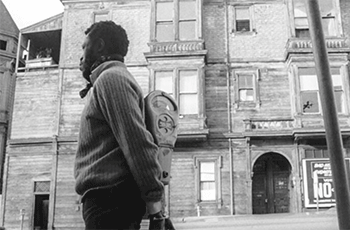
The World Cinema Project (WCP) preserves and restores neglected films from around the world. To date, 54 films from Africa, Asia, Eastern Europe, Central America, South America, and the Middle East have been restored, preserved and exhibited for a global audience. The WCP also supports educational programs, including Restoration Film Schools; intensive, results-oriented workshops allowing students and professionals worldwide to learn the art and science of film restoration and preservation. All WCP titles are available for exhibition rental by clicking "Book This Film."
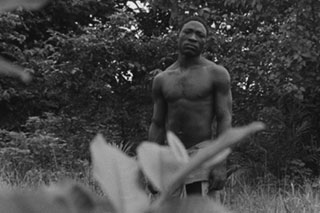
MUNA MOTO
Director: Dikongué-Pipa
WRITTEN BY: Dikongué-Pipa
EDITING: Andrée Davanture, Dominique Saint-Cyr, Jules Takam
DIRECTOR OF PHOTOGRAPHY: Jean-Pierre Dezalay, Jean-Luc Léon
STARRING: David Endéné, Arlette Din Bell, Philippe Abia, Gisèle Dikongué-Pipa, Jeanne Mvondo
COUNTRY OF PRODUCTION: Cameroon
LANGUAGE: French with English subtitles
COLOR INFO: Black and White
RUNNING TIME: 90 minutes
Restored in 2019 by Cineteca di Bologna/L’Immagine Ritrovata and The Film Foundation’s World Cinema Project. Funding provided by the Hobson/Lucas Family Foundation.
This restoration is part of the African Film Heritage Project, an initiative created by The Film Foundation’s World Cinema Project, the Pan African Federation of Filmmakers and UNESCO – in collaboration with Cineteca di Bologna – to help locate, restore, and disseminate African cinema.
NOTES ON THE RESTORATION:
The 4K restoration of Muna Moto was made from the 35mm original camera and sound negatives and a second generation dupe negative.
Despite wet-gate scanning to minimize mold damage, some sections of the camera negative had to be replaced by scanning the dupe negative.
Following director Dikongue-Pipa’s suggestion, the dupe negative was also used for the opening and closing cards which differed from the original negative. A vintage 35mm print was used as a reference for picture grading. Special thanks to Cinémathèque Royale de Belgique.
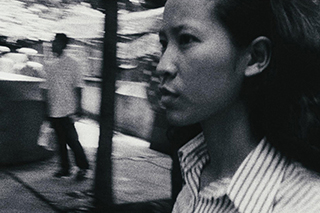
Mysterious Object at Noon
DOKFAH NAI MEU MAAN
Director: Apichatpong Weerasethakul
EDITING: Mingmongkol Sonakul, Apichatpong Weerasethakul
DIRECTOR OF PHOTOGRAPHY: Apichatpong Weerasethakul, Prasong Klimborron
PRODUCER: Gridthiya Gaweewong, Mingmongkol Sonakul
SOUND: Teekadetch Watcharatanin, Sirote Tulsook, Paisit Phanpruksachat, Adhinan Adulayasis
STARRING: Somsri Pinyopol, Duangjai Hiransri, To Hanudomlapr, Kannikar Narong, and the villagers of Thailand
COUNTRY OF PRODUCTION: Thailand
LANGUAGE: Thai
COLOR INFO: Black and White
RUNNING TIME: 88 minutes
PRODUCTION COMPANY: 9/6 Cinema Factory, Firecracker Films, Bangkok
PRODUCER: Gridthiya Gaweewong, Mingmongkol Sonakul
Restored in 2013 by the Austrian Film Museum and Cineteca di Bologna/L’Immagine Ritrovata laboratory, in association with The Film Foundation’s World Cinema Project, LISTO laboratory in Vienna, Technicolor Ltd in Bangkok, and Apichatpong Weerasethakul. Restoration funded by Doha Film Institute.
On his journey, the director hears a story which he then asks people to continue as they wish— like a game of Chinese Whispers (and relating also to the French Surrealists’ concept of the “cadavre exquis”). The original title, Dokfah nai meu maan, roughly translates as Heavenly Flower in Devil’s Hand. The name of that flower, Dokfah, is also the name of the woman who appears in the story-within-a-film as the teacher of a young paraplegic boy. The title is reminiscent of an archetypical Thai melodrama, but in the hands of the most imaginative re interpreter of national tradition, it becomes an epic meta-narrative.
I want to give the audience the freedom to fly or to float, to just let their mind go here and there, to drift, like when we sit in a train, listen to a Walkman, and look at the landscape. It is liberating, and also the audience understands that they are not watching a routine, three act narrative.
- Apichatpong Weerasethakul
NOTES ON THE RESTORATION:
The restoration of Mysterious Object at Noon utilized the 35mm duplicate negative with burned-in English subtitles deposited at the Austrian Film Museum by Apichatpong Weerasethakul in 2007. This negative was struck in 1999 from the (now lost) original 16mm camera reversal element.
The duplicate negative was scanned at 3K at the Austrian Film Museum. Painstaking digital restoration work was undertaken to remove dust, scratches and other visible marks while keeping the look (and the specific defects) of the original 16mm camera reversal material intact. Color correction was carried out at the LISTO laboratory in Vienna; the 35mm optical soundtrack negative was transferred at L’Immagine Ritrovata in Bologna; the digital sound restoration was performed at Technicolor Ltd in Bangkok.
The restoration was carried out in close collaboration with the filmmaker and completed in June 2013. The process produced a new 35mm internegative.
Image: © Courtesy of Apichatpong Weerasethakul
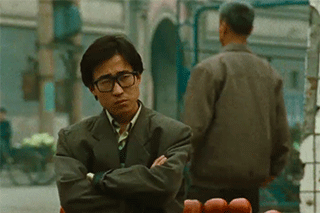
PICKPOCKET
XIAO WU
Director: Jia Zhang-ke
WRITTEN BY: Jia Zhang-ke
EDITING: Lin Xiao Ling
DIRECTOR OF PHOTOGRAPHY: Yu Lik Wai
PRODUCER: Li Kit Ming, Jia Zhang-ke
ASSISTANT DIRECTOR: Gu Zheng
ART DIRECTOR: Liang Jing Dong
STARRING: Wang Hong wei, Hao Hong Jian, Zuo Bai Tao
COUNTRY OF PRODUCTION: China
LANGUAGE: Mandarin
COLOR INFO: Color
RUNNING TIME: 108 minutes
PRODUCER: Li Kit Ming, Jia Zhang-ke
Restored by The Film Foundation's World Cinema Project and Cineteca di Bologna at L'Immagine Ritrovata laboratory in collaboration with Jia Zhang-ke and in association with MK2.
Restoration funding provided by the Hobson/Lucas Family Foundation.
NOTES ON THE RESTORATION:
The 4K restoration of XIAO WU was made from the original 16mm camera and sound negatives. The restoration process and color grading was supervised by director Jia Zhang-ke.
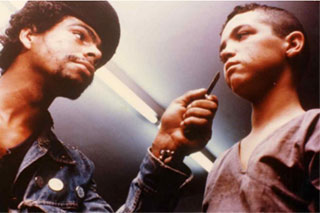
PIXOTE
PIXOTE, A LEI DO MAIS FRACO
Director: Héctor Babenco
WRITTEN BY: Héctor Babenco, Jorge Durán
EDITING: Luiz Elias
DIRECTOR OF PHOTOGRAPHY: Rodolfo Sanchez
PRODUCER: Sylvia B. Naves, Paulo Francini, José Pinto
ART DIRECTOR: Clóvis Bueno
STARRING: Fernando Ramos da Silva (Pixote), Jorge Julião (Lilica), Gilberto Moura (Dito), Edilson Lino (Chico), Zenildo Oliveira Santos (Fumaça), Claudio Bernardo (Garatao), Israel Feres David (Roberto Pie de Plata), Jose Nilson Martin Dos Santos (Diego), Marília Pêra (Sueli)
COUNTRY OF PRODUCTION: Brazil
LANGUAGE: Portuguese with English subtitles
COLOR INFO: Color
RUNNING TIME: 128 Minutes
PRODUCTION COMPANY: Embrafilme, HB Filmes
PRODUCER: Sylvia B. Naves, Paulo Francini, José Pinto
Restored by The Film Foundation’s World Cinema Project and Cineteca di Bologna at L'Immagine Ritrovata in association with HB Filmes, Cinemateca Brasileira, and JLS Facilitações Sonoras. Restoration funded by the Hobson/Lucas Family Foundation.
NOTES ON THE RESTORATION:
Restored in 4K from the 35mm original camera negative and a first generation 35mm dupe negative preserved at the Cinemateca Brasileira. In order to minimize the overall presence of mold, particularly invasive in reels 3, 5 and 6, the camera negative was wet-gate scanned at 4K resolution and digital restoration required considerable efforts. Missing frames in three different shots of reel 3 were replaced using the internegative.
The recently rediscovered original magnetic soundtrack, also affected by mold, with the oxide peeling off the base, was carefully repaired by Beto Ferraz then digitized and restored by José Luiz Sasso (ABC), sound engineer for Hector Babenco in 1981. Final color grading was supervised by cinematographer Rodolfo Sánchez using a first generation vintage 35mm print as reference.
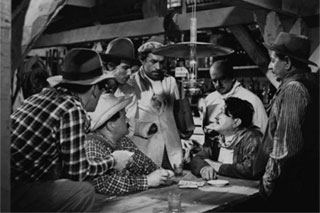
PRISIONEROS DE LA TIERRA
Director: Mario Soffici
WRITTEN BY: Ulyses Petit de Murat, Darío Quiroga
EDITING: Gerardo Rinaldi, José de Nico
DIRECTOR OF PHOTOGRAPHY: Pablo Tabernero
MUSICAL DIRECTOR: Lucio Demare
PRODUCTION DESIGN: Ralph Pappier
STARRING: Ángel Magaña (Esteban Podeley), Elisa Galvé (Andrea), Francisco Petrone (Köhner), Homero Cárpena, Raúl De Lange, Roberto Fugazot
COUNTRY OF PRODUCTION: Argentina
LANGUAGE: Spanish and Guaranì with English subtitles
COLOR INFO: Black and White
RUNNING TIME: 85 minutes
PRODUCTION COMPANY: Pampa Films
Restored by Cineteca di Bologna at L’Immagine Ritrovata and The Film Foundation’s World Cinema Project in association with the Museo del Cine Pablo Ducros Hicken with elements provided by the Cinémathèque Française and the Narodni Filmovy Archiv.
Funding provided by the Hobson/Lucas Family Foundation.
NOTES ON THE RESTORATION:
PRISIONEROS DE LA TIERRA was restored using the best existing elements: a first generation 35mm positive print held at La Cinémathèque française and a recently rediscovered third generation 35mm positive print preserved by the Narodni Filmovy Archiv. For its overall completeness and photographic quality, the first generation 35mm positive print was used to restore the image, while the third generation 35mm positive print was the primary source for sound restoration.
A 16mm dupe negative, provided by the Museo del Cine, has been also been studied and compared as a reference. Color grading was supervised by Paula Félix Didier, director of the Museo del Cine Pablo Ducros Hicken.

RAID INTO TIBET
Director: Adrian Cowell
DIRECTOR OF PHOTOGRAPHY: Chris Menges
PRODUCER: George Patterson
COUNTRY OF PRODUCTION: UK
LANGUAGE: English/Tibetan with English subtitles
COLOR INFO: Black-and-White
RUNNING TIME: 28 minutes
PRODUCER: George Patterson
Restored by The Film Foundation’s World Cinema Project at Cineric Inc. laboratory in association with the Tibet Film Archive. Special thanks to the Cowell family.
In May 1964, three British filmmakers traveled with the Khampa guerrillas over a 20,000-foot pass into occupied Tibet from the remote Tsum region of Nepal and captured dramatic footage of an ambush on a Chinese military convoy. The footage was smuggled out and edited two years later in London, and officially released in 1966 to critical acclaim. Shot by Oscar-winning cinematographer Chris Menges (THE READER, LOCAL HERO, THE KILLING FIELDS), this documentary short is an important historical artifact, representing the only known footage of armed Tibetan resistance fighters in combat with the Chinese.
NOTES ON THE RESTORATION:
Restoration work was completed at Cineric in New York. The original 16mm camera negative was cleaned, repaired, then wet-gate scanned at 4K to eliminate scratches and other minor defects in the emulsion. The image was subsequently stabilized and digitally cleaned to remove dust, deep scratches, and other visible marks. Because of the extreme conditions in Tibet during the filming, Cineric implemented exposure compensation at the initial scanning of the raw material. Grading was performed by colorist Paul Ensby and supervised by Chris Menges at Technicolor London.
The original sound negative was also scanned and digitally cleaned to reduce background noise and remove clicks and pops. A new 35mm internegative with sound has been made for preservation, along with 35mm prints for conservation and access. In addition, a new HD master and DCP will be produced for digital screenings.
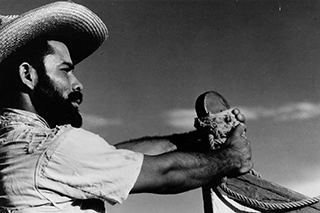
REDES
Director: Fred Zinnemann, Emilio Gómez Muriel
WRITTEN BY: Agustín Velázquez Chávez, Paul Strand
EDITING: Emilio Gómez Muriel, Gunther von Fritsch
DIRECTOR OF PHOTOGRAPHY: Paul Strand
ADAPTED BY: Emilio Gómez Muriel, Fred Zinnemann and Henwar Rodakiewicz
MUSICAL DIRECTOR: Silvestre Revueltas
SOUND: Roberto, Joselito Rodriguez
FROM: Cinemateca de la UNAM, Mexico
STARRING: Silvio Hernández (Miro), David Valle González (Monopolist), Rafael Hinojosa (Politician), Antonio Lara (El Zurdo), Miguel Figueroa and native fishermen
COUNTRY OF PRODUCTION: Mexico
LANGUAGE: Spanish with French and English subtitles
COLOR INFO: Black and White
RUNNING TIME: 61 minutes
PRODUCTION COMPANY: Secretaría de Educación Pública
Restored in 2009 by Cineteca di Bologna/L'Immagine Ritrovata laboratory, in association with The Film Foundation’s World Cinema Project and Filmoteca de la UNAM. Restoration funded by Armani, Cartier, Qatar Airways and Qatar Museum Authority.
The film – the first (and last) of its kind – was expected to play a small part in the Government’s plan to educate millions of illiterate citizens throughout the enormous country and bring them out of their isolation. […] The picture was to be made for the Federal Department of Fine Arts, headed by composer Carlos Chávez. The producer would be Paul Strand. […] We had recruited practically all ‘actors’ from among the local fishermen, who needed to do no more than be themselves. They were splendid and loyal friends, and working with them was a joy. In addition to acting, they carried all the equipment, rowed the boats and did a multitude of other jobs, earning more money than ever before – forty-five cents per day, per man – and enjoying themselves hugely. […] I’m told that some years later the Nazis found the negative in Paris and burned it. A few prints still exist. –Fred Zinnemann
NOTES ON THE RESTORATION:
The restoration of Redes used the best surviving materials, namely a 35mm safety duplicate negative and a positive print preserved at the Filmoteca de la UNAM in Mexico. The digital restoration produced a new 35mm internegative.
Image: © Courtesy of Filmoteca de la UNAM
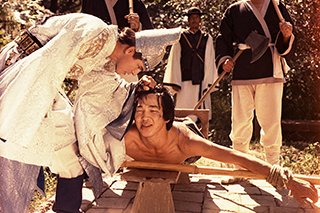
REVENGE
MEST
Director: Ermek Shinarbaev
WRITTEN BY: Anatoli Kim
EDITING: Polina Stein
DIRECTOR OF PHOTOGRAPHY: Sergei Kosmanev
PRODUCER: Habibur Rahman Khan
MUSICAL DIRECTOR: Vladislav Shute
STARRING: Alexandre Pan (Sungu, the poet), Oleg Li (King-Monk), Valentin Te (Novice), Lubove Germanova (Elza), Rasim Jakibaev (Tsai)
COUNTRY OF PRODUCTION: Kazakhstan
LANGUAGE: Russian with French and English subtitles
COLOR INFO: Color
RUNNING TIME: 96 minutes
PRODUCTION COMPANY: Kazakhfilm Studios
SET DESIGNER: Elena Eliseeva
PRODUCER: Habibur Rahman Khan
Restored in 2010 by Cineteca di Bologna/L'Immagine Ritrovata laboratory, in association with The Film Foundation’s World Cinema Project, the Kazakhfilm Studio, the State Archive of the Republic of Kazakhstan and Ermek Shinarbaev. Restoration funded by Armani, Cartier, Qatar Airways and Qatar Museum Authority.
In a rage, a teacher murders a boy. Another boy is bred, for one sole purpose: to avenge his brother’s death. Kazakh master Ermek Shinarbaev’s close collaboration with the Korean-Russian writer Anatoli Kim yielded three great films, the most remarkable of which is this beautiful, profoundly unsettling film. A true odyssey, geographically and psychologically. One of the greatest films to emerge from the Kazakh New Wave, and one of the toughest.
(Kent Jones, May 2010)
In the beginning of the 40s, hundreds of thousands of Koreans that had lived in the Russian Far East since the XIX century were forcibly displaced overnight according to Stalin’s orders. They were regarded as traitors and public enemies. Women, children, old people, were sent away with no explanation. The Korean diaspora, with a population of over a million, has been a forbidden topic for many years. Revenge is the first film telling the story of their tragedy.
(Ermek Shinarbaev, May 2010)
NOTES ON THE RESTORATION:
The restoration of Revenge, used the original camera negative, the sound negative and a positive print provided by the Kazakhfilm Studio and held at the State Archive of the Republic of Kazakhstan. Special thanks to director Ermek Shinarbaev for actively participating in the restoration.
Image: © Courtesy of Kazakhfilm Studio
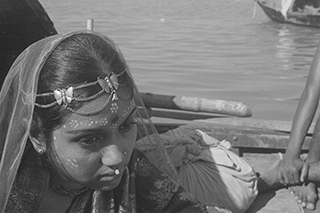
River Called Titas, A
TITAS EKTI NADIR NAAM
Director: Ritwik Ghatak
WRITTEN BY: Advaita Malla Burman, Ritwik Ghatak
EDITING: Basheer Hussain
DIRECTOR OF PHOTOGRAPHY: Baby Islam
PRODUCER: Habibur Rahman Khan
MUSICAL DIRECTOR: Ustad Bahadur Khan
STARRING: Kabari Choudhury (Rajar Jhi), Roushan Jamil (Mother), Probir Mitra (Kishore), Ritwik Ghatak (Tilakchand), Rani Sarkar (Mungli), Sufia Rustam (Udaytara), Rosi Smad (Basanti)
COUNTRY OF PRODUCTION: India
LANGUAGE: Bengali with French/English subtitles
COLOR INFO: Black and White
RUNNING TIME: 158 minutes
ON COMPANY: Ribatan Ghatak/Ritwik Memorial Trust; National Film Archive of India; Bundesarchiv-Filmarchiv
PRODUCER: Habibur Rahman Khan
Restored in 2010 by Cineteca di Bologna /L’Immagine Ritrovata laboratory, in association with Ritwik Memorial Trust, the National Film Archive of India, and The Film Foundation’s World Cinema Project. Additional film elements provided by the Bundesarchiv-Filmarchiv. Restoration funded by Doha Film Institute.
If you were eighteen years old, growing up in New Delhi, a student of cinema, a cinephile or a plain film snob, it was given that you would swoon over the film-maker Ritwik Ghatak and spend endless hours in the Delhi University canteen discussing his films, his alcoholism, and his eventual death from Tuberculosis. An ‘avant garde’ Writer and Director, Ghatak had caught the imagination of many of us who carried Mao’s Red Book’ and quoted liberally from it (in English) at the drop of a hat. After all, didn’t Ghatak (a card carrying Communist) film the extreme poverty and the cultural extinction of Bengal by Imperialism? Because of the political ‘din’ surrounding much of Ghatak’s work, ironically the work itself, as opposed to the man’s personality and politics, got neglected by the legion of his die-hard fans (me included!). It was only years later when I saw his epic, A River Called Titas, that I swooned for totally different reasons. The film is a work of pure genius. A passionate elegy for a dying culture, it moved me profoundly, and continues to haunt me to this day. Based on a novel by the Bengali author Advaita Barman and adapted for the screen by Ghatak, A River Called Titas, tells the raw and powerful story of a dying river and a dying culture.
–Deepa Mehta, May 2010
NOTES ON THE RESTORATION:
The restoration of A River called Titas used the camera and sound negatives and a positive print provided by the Ritwik Memorial Trust and held at the National Film Archive of India. As the original negative is incomplete and some reels were severely damaged, a combined lavender and a positive print provided by the Bundesarchiv-Filmarchiv were also used. The digital restoration produced a new 35 mm internegative.
Image: © Courtesy of Ritaban Ghatak - Ritwik Memorial Trust
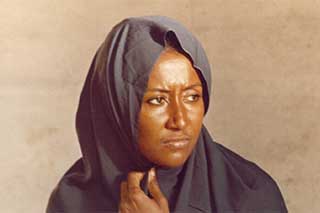
SAMBIZANGA
Director: Sarah Maldoror
EDITING: Georges Klotz
DIRECTOR OF PHOTOGRAPHY: Claude Agostini
STARRING: Elisa Andrade, Domingos De Oliveira, Jean M’Vondo, Adelino Nelumba, Benoît Moutsila, Tala Ngongo, Lopes Rodrigues, Henriette Meya, Manuel Videira
COUNTRY OF PRODUCTION: Angola, France
LANGUAGE: Portuguese, Lingala and Kimbundu with English subtitles
COLOR INFO: Color
RUNNING TIME: 96 minutes
Restored by The Film Foundation’s World Cinema Project and Cineteca di Bologna at L’Image Retrouvée in association with Éditions René Chateau and the family of Sarah Maldoror.
Funding provided by Hobson/Lucas Family Foundation.
This restoration is part of the African Film Heritage Project, an initiative created by The Film Foundation’s World Cinema Project, the Pan African Federation of Filmmakers and UNESCO – in collaboration with Cineteca di Bologna – to help locate, restore, and disseminate African cinema.
NOTES ON THE RESTORATION:
Restored in 4K from the original 35mm negatives. Color grading was supervised by Annouchka De Andrade and cinematographer Jean-François Robin.
With special thanks to Annouchka De Andrade and Henda Ducados.
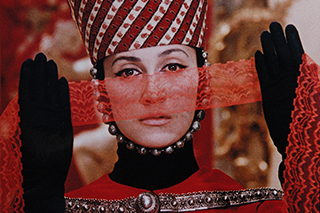
SAYAT NOVA
COLOR OF POMEGRANATES, THE
Director: Sergei Parajanov
WRITTEN BY: Sergei Parajanov
EDITING: Maria Ponomarenko
DIRECTOR OF PHOTOGRAPHY: Suren Shakhbazian
MUSICAL DIRECTOR: Tigran Mansurian
SOUND: Yuri Sayadyan
ART DIRECTOR: Stepan Andranikian, Mikhail Arakelian
STARRING: Sofiko Chiaureli (the Poet as a youth, the Poet’s Beloved, the Nun in White Lace, the Angel of the Resurrection, the Pantomime), Melkon Alekian (the Poet as a child), Vilen Galustian (the Poet as a monk), Georgi Gegechkori (the Poet in Old Age), Hovhannes (Onik) Minsasian (the King), Spartak Bagashvili (the Poet’s father), Medea Japaridze (the Poet’s mother), Grigori Margarian (Sayat Nova’s teacher)
COUNTRY OF PRODUCTION: Armenia
LANGUAGE: Armenian
COLOR INFO: Color
RUNNING TIME: 77 minutes
Restored by Cineteca di Bologna/L’Immagine Ritrovata laboratory and The Film Foundation’s World Cinema Project, in association with the National Cinema Centre of Armenia and Gosfilmofond of Russia. Restoration funded by the Material World Charitable Foundation.
And what about the fate of the picture now? Armenia showed this film, sent people to see it. I wouldn’t say that the people understand the picture, but they go as if to a celebration. […] Every layer of society is going – they sense their genes in the picture. It wasn’t the subject, it wasn’t the established canons of the fate of the poet – conflict with the tsar, conflict at court, the banishing of the poet from the palace, wordly life, the monastery – these were not the point of my scenario, but the colors, the accessories, the details, of the daily life that accompanied the poetry. Here I was trying to portray the art in life, rather than portray life in art. The other way around, so that art is reflected in life. […] The picture is very primitive in its structure: there was childhood, there was youth, there was love, there was the monastery, there were the stones. The beloved was a stone, the cell was the beloved, the beloved, her breast is glorified in verse, the rose is glorified in verse. Then there was the thought: my throat is dry, I am ill. The poet dies. Everything is so simple, clear, as in the fate of a great poet, an ashugh, a minstrel.
- Sergei Parajanov
Watching Sergei Parajanov’s The Color of Pomegranates, or Sayat Nova, is like opening a door and walking into another dimension, where time has stopped and beauty has been unleashed. On a very basic level, it’s a biography of the Armenian poet Sayat Nova, but before all else it’s a cinematic experience, and you come away remembering images, repeated expressive movements, costumes, objects, compositions, colors. Sayat Nova lived in the 18th century, but the look and movement of the film seem to have come out of the middle ages or an even earlier time: Parajanov’s cinematic tableaux feel like they’ve been carved in wood or stone, and the colors seem to have naturally materialized from the images over hundreds of years. There’s nothing else quite like this picture. For many years, it’s been a dream to see The Color of Pomegranates restored to the form originally intended by Parajanov. This restoration represents years of painstaking work by many people. As always, I would like to thank our colleagues and partners at the Cineteca di Bologna and L’Immagine Ritrovata as well as all the individuals and organizations who have supported this challenging project and dedicated an enormous amount of time and energy to preserve Parajanov’s oeuvre.
- Martin Scorsese
NOTES ON THE RESTORATION:
45 years after its Armenian release, the film is premiered at Cannes Classics in its restored version, as Parajanov originally conceived it. Both the Armenian (also known as “Parajanov’s cut”) and Russian (Sergei Yutkevic’s) versions have been preserved and restored. The restoration used the original camera negative preserved at Russia’s Gosfilmofond, as well as the 35mm dupe negative held by the National Cinema Centre of Armenia.
The original camera negative has been scanned in 4K by Gosfilmofond in Russia and restored by L’Immagine Ritrovata in Bologna. The sound restoration was made from the original magnetic track, preserved by Gosfilmofond, in addition to the Armenian reference print. A vintage print of the film, produced on Orwo stock and preserved by the Harvard Film Archive, was used as a reference for the grading phase.
The Russian version of The Color of Pomegranates has also been preserved for posterity.
Image: © Courtesy of the Parajanov Museum, Yerevan
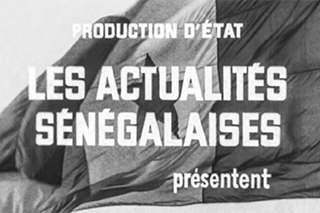
SÉNÉGAL AN XVI
Director: Babacar Gueye and Orlando Lopez
COUNTRY OF PRODUCTION: Senegal
LANGUAGE: French with English subtitles
COLOR INFO: Black and White
RUNNING TIME: 21 minutes
Restored by The Film Foundation’s World Cinema Project and Cineteca di Bologna at L’Immagine Ritrovata laboratory, in collaboration with the Ministère de la Culture et du Patrimoine Historique de Sénégal – Direction du Cinéma. Restoration funded by the Hobson/Lucas Family Foundation.
This restoration is part of the African Film Heritage Project, an initiative created by The Film Foundation's World Cinema Project, the Pan African Federation of Filmmakers and UNESCO―in collaboration with Cineteca di Bologna―to help locate, restore, and disseminate African cinema.
NOTES ON THE RESTORATION:
The 4K restoration was completed using a 16mm print preserved by the Direction du Cinéma in Senegal. With special thanks to Tiziana Manfredi and Marco Lena.
